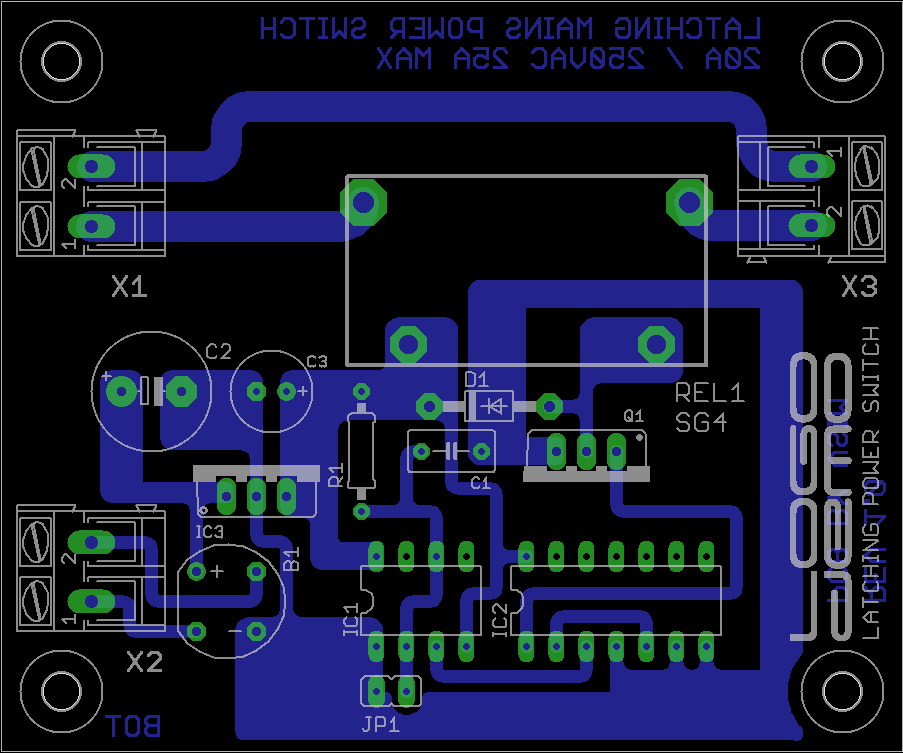Pcb Logo Creator Script Files Download

Documentation / Scripting / Script Examples Reference. Script Examples Reference. PCB Logo Creator DelphiScript Scripts PCB PCB Logo Creator PCBLogoCreator.PrjScr. Script Filename. Change Mapping Dialog to map fields from a CSV text file. This script is used by the main Import Pin dialog.
That is because of the way the script works, converting pixels to traces. If image has poor resolution the tracks which compose those letters will appear, as you say, grainy. My solution for this is import a higher resolution image (if available) onto an unpopulated and unrouted empty board. Then without deselecting the newly created tracks, scale them down to the needed size. This way at the same size you'll have effectively used thinner tracks. Then use copy/paste to place the logo wherever you need. Regarding manufacturer limits, you shouldn't have to worry too much, those tracks are close to each other and will 'blur' (overetch) a bit.
Oh, and be sure to perform DRC before you place the logo. Hope I helped a bit, Johm.
I've seen it done very nicely with TrueType fonts. Curiously, PCB does not support a Bezier curve, which is kind of the biggest limiting problem.
You can't import a DXF/DWG drawing that uses them (if you're lucky, they will be chopped into approximating circular arc segments; often they simply don't show up at all). That said, I don't know how it's able to write a TTF glyph into the Gerber output (guess I should inspect one, some time), but apparently it works, and it's definitely better than a crude scripted conversion to heaps of traces! This looks relevant. You'll need a vector source, perhaps use GIMP or Inkscape?

Try not to use a raster image; at least convert it to vector and do some cleanup first. Pretty sure it just rasterizes things, and not in any particularly smart way. You also see this in PDF outputs of PCB artwork: the fonts get rasterized there, too, so I'd assume the same is true of the Gerbers. In at least one case I've had text come out too ugly to use, which is rather disappointing. As you say, it's the lack of a Bezier primitive which causes all this trouble. Presumably this is because Gerber format also lacks any kind of Bezier support, but isn't getting around hurdles like that exactly why we pay Altium so much money?
Quote BITMAP TO PROTEL PCB CONVERTER This program was designed to allow importing of bitmap images onto a Protel PCB. The ouput of this program is a generic Protel PCB file.
Simply open this PCB design in the PCB editor, select and copy this area. Then paste the image onto your circuit board design. To use this program click on Input Bitmap Choose. Select a BLACK and WHITE image. Although a color image may be chosen the program only looks for BW pixels. You may choose the board layer but with cutting and pasting it really doesn’t matter.
You may also scale the image and perform simple transformations. Finally click on Output PCB choose and select and output filename. The PCB image will then be generated. This was a quick and easy hack to get an image onto a PCB.
It serves my purpose and it may be of some use to you. I release it AS-IS. Okay I got this. Kommercheskoe predlozhenie po razrabotke kotlovana obrazec. Take your bitmap and preferebly make it black and white (if possible). Download Inkscape and open your bitmap in Inkscape. (select embed and not linked if it asks).
Select your bitmap in Inkscape by clicking on it (you wouldn't have guessed that would you ) 4. Press Shift+Alt+B (or Path-> convert Bitmap in the menu). This will open a window with a lot of parameters, just click ok. Now Inkscape should have converted your bitmap to a vector image which lies ontop of the bitmap. Drag the vector image a bit to the side and delete the bitmap.
Now save your new vector image as.svg somewhere. (if the convertion didn't do good enough edit the parameters until you get a better result or edit the vector image manualy) 7. After that, follow this guide (open the pdf): This guide explains how you can edit an svg font and how you can convert it to a ttf. (Note: skip the whole xml editing thing, it is useless) 8. Once you have your ttf install it and open your PCB.
Place a string on it and select 'True Type font' in the string editor. Now select your font and write as string the glyph with your logo on it. Set the appropriate height to scale your logo (the height won't match the actual height because you will probably not use 100% of the given glyph space). I did the whole thing myself in about 5mins. I attached the different steps as a reference.